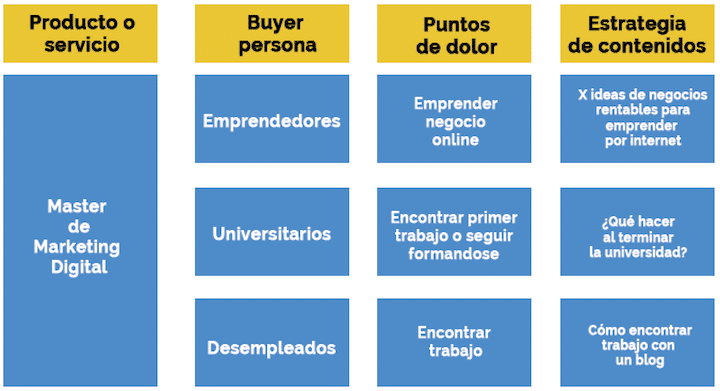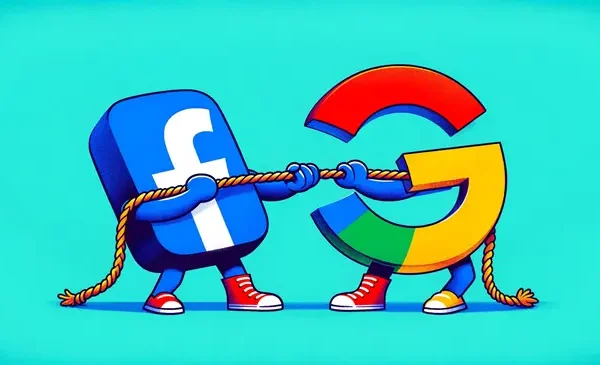The target es una palabra anglosajona que significa target, pero si lo aplicamos al marketing nos referimos al público objetivo de nuestras acciones y estrategias.
Be clear Who is it son las persons a las que nos tenemos dirigir, where they are and as reaching them is essential.
In this article I will explain 5 steps that are key to defining your marketing target well.
What is the target in marketing?
El target si nos referimos a marketing es nuestro público objetivo o la audiencia de nuestra strategy de marketing digital.
That is, the group of people to whom we are going to offer or sell a service and / or product.
Conocer bien nuestro público objetivo es fundamental para el acierto y la eficacia de nuestra campaña de advertising y marketing.
There are different types of marketing strategies, some are more effective than others.
But there is one point they have in common, and that is that they must all be focused on a specific segment.
When I say know, I do not mean knowing only socio-demographic aspects, which may have little use in my opinion.
Me refiero a conocer aspectos importantes que afectan al proceso de decisión de compra, eso sí que son muy interesantes.
What is the customer target?
The objective of your strategy will be to impact a series of people to attract them to your brand and convert them into its customers.
To be able to understand well that the customer target you have to correctly define your business model, in order to define the different buyers for each service and / or product.
To make a general definition of the type of clients for the company is not that it has great value, since the company wants to generate income through the contracting of services or the sale of products.
Therefore what we must do is centrarnos en la definición del target de client por cada servicios o productos that we want to carry out a digital marketing strategy.
So forget about the generic definition of customer target and go to the specific definition.
Types of target of a company
1. Silent Generation (1930 - 1948)
Pick up those over 70 years of age. They are the children who grew up after the Spanish Civil War.
In the rest of Europe and the Western world, it includes those who lived after the Second World War.
It is the least numerous generation.
The living conditions they had for a good part of their lives, with high rates of infant mortality, marked both their population and their character.
Are very austere and hardworking people that they have been educated in the culture of effort and sacrifice and that they have known a much harder life.
2. Baby Boomers (1946 - 1965)
The Baby boomers They were born during the post-World War II birth explosion between 1946 and 1965.
They lived through the great crises and revolutions of contemporary history, saw man land on the moon and witnessed the change of television from black and white to color.
They witnessed the rise of the Beta, VHS, DVD and bluray format and they know the before and after line of the Internet.
3. Generation X (1961-1980)
Most of the members of the so-called Generation X (those born between 1961 and 1980).
They have active, balanced and happy lives in which they spend much of their free time in culture, outdoor leisure or reading. According to a long-term study conducted by the University of Michigan in 2011.
Generation X is that generation that survived the consumer fever of the 80s, which saw the birth of the Internet and the fall of the .com bubble of the 90s.
In their younger years, they were a rebellious and counter-current generation that refused to accept the stale world established by the adults of the moment.
4. Generation Y - Millenials (1981-1993)
The Generation Y or Millennials are those people born between 1981 and 1993 (or 1996, depending on the body consulted).
It is the first generation that can be considered global.
Unlike the previous ones, in this there are no differences between countries and all young Westerners can identify with the same values.
5. Generation Z (Pivotals)
It is the generation that has taken over from the millennials. They are at most 23 years old and outnumber their predecessors.
They are more entrepreneurial than millennials.
They learn quickly and in a self-taught way, which makes them much more irreverent young people than their fellow millennials, educated with much more rigid systems.

<>
How to define the target in marketing in 5 steps
Step 1. Define the business model of the company
The first step is to define the services and / or products through which you want to generate a sustainable business model for the company.
Begin by making a simple definition grouped into 3 categories.
For example, if you want to start your own project, these are the 3 categories that I recommend you consider: services, consulting and training.
Then describe a little more each of these new services and / or products with aspects such as:
- Definition.
- Aim.
- Importance in the business model.
- Target audiences.
Step 2. Competitor analysis and definition of the digital profile
It's very important do a good competitor analysis to discover more information on how your competitors are generating income with their business model and also to obtain more information on the target or target audience.
This does not mean that we will have the same target audience, but the information obtained will help us to make a good definition of these.
We will analyze the different channels and strategies to see which are the most effective for generating income and to bring us closer to that audience we are looking for.
From our clients we must know aspects such as:
- What social networks do you use?
- In what digital media is it present?
- ¿Cuáles son las keywords que están relacionadas con un producto o servicio?
- ¿Cuáles son los diferentes buyer persona?
- What are they looking for or need?
- What are your main pain points?
Step 3.- Define the demographic and sociocultural profile
Defining the demographic profile will help us to better target both the tone and the form of our communications to reach our future clients.
We will define demographic aspects as:
But it is also important to know the sociocultural level of our clients and to know aspects such as:
- What is your economic level?
- What is your level of studies?
- What are the languages?
- What kind of values and customs do you have?
Step 4.- Definition of the buyer person for each service and / or product
This is the most important part of the process, since we are going to define all the buyer persona for each service and for each product.
Always remember that a service or product can have a buyer persona, and we must define each and every one of them.
Ejemplo de los buyer Persona para un product info de running:

Example of buyer persona for a digital marketing course:

In this case, in addition to defining the buyer persona and their pain points, we include content to attract this type of target audience.
Step 5.- Integrate the definition of the target audience with the marketing actions
Once the different buyer personas for all our services and / or products have been defined, we have to integrate all this information with the different digital marketing strategies.
5.1 Content Strategy
Analyze the most suitable content to attract the different buyer persona, in this way we will be integrating our target audience with the content strategy.
5.2 Social Networks
Publish content to precisely attract your target audience, since you have information about what they are looking for or demanding. Above all, avoid brand-name self-promotion that is useless.
5.3 Advertising
Plan one or more campaigns to promote or launch a specific product.
exist different types of advertisingDepending on your business model, there will be channels that can work better.
Conclusions
In this article you have learned what the target or target audience is, and how you have to define it in digital marketing.
Forget about a general definition of the public and instead make the generic definition based on each service and / or product that you want to promote.
Once your target audience is defined, you have to integrate it with your actions or digital marketing strategies.
If you follow these recommendations, you will surely be able to improve the sales of your products.
How do you define your target audience?
Do you take competitive analysis into account in its definition?
If you liked the article, you can share it with a friend.

![Qué es y cómo definirlo [Tipos y Ejemplos]](https://rmarketingdigital.com/wp-content/uploads/2020/11/que-es-el-target-en-marketing-01-9757726.png)


![40 Best Applications for Instagram in 2020 [Essential Tools]](https://rmarketingdigital.com/wp-content/uploads/2020/11/mejores-aplicaciones-para-instagram-1-9698449-600x322.png)


